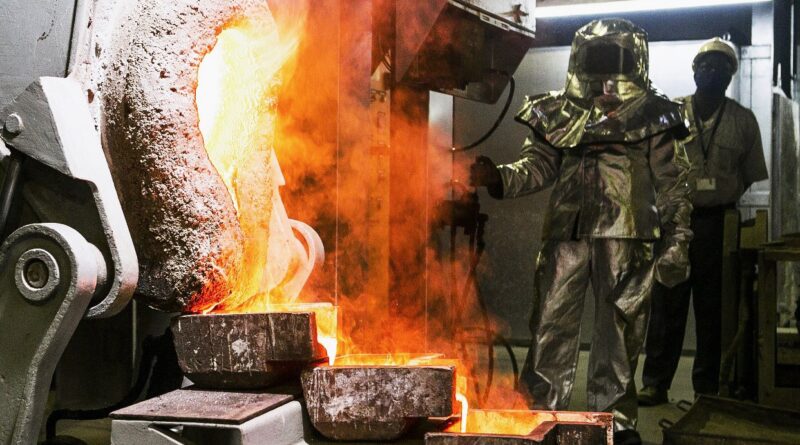Gold price starts the week back above $1,900 but sees volatility
The gold market continues to see significant volatility as Western nations react to the Russian invasion of Ukraine. Countries across the world are wreaking havoc on Russia’s economy, cutting the country off from the rest of the economic world in response to Russian President Vladimir Putin’s invasion of Ukraine. Steve Rattner discusses the impact these sanctions will have not only on the Russian economy, but on the rest of the economic world.
Safe-haven demand pushed gold prices up 2% at the start of the Asian trading session, kicking off the new week on a solid note. However, analysts note that the precious metal still faces strong momentum in the U.S. dollar as the world’s dominant currency in this uncertain environment.
April gold futures last traded at $1,917.50 an ounce, up 1.5% on the day. Gold’s solid start comes as U.S. equity markets see strong selling pressure with the S&P 500 opening the week down 2%.
Meanwhile, on Sunday, Russian President Vladimir Putin ordered his country’s deterrence forces — including nuclear arms — onto their highest state of alert.
The U.S. and other Western nations are also sending military aid to Ukraine as Russian forces surround and draw closer to Ukrainian’s capital city, Kyiv.
The rouble has sunk to a record low, the Russian central bank has doubled its key interest rates and there have been queues at cash points as people try to get their money out. Russia says that it was expecting and was prepared for Western sanctions and it is standing by its position that these sanctions are a form of Western aggression against Russia.
Analysts have said if tensions continue to escalate, gold prices could quickly push back to $2,000 an ounce. The current environment with so much geopolitical uncertainty could see prices pushing to new all-time highs in a few days.
However, some analysts have said that gold still faces a lot of headwinds and volatility is picking up. Last week as Russia invaded Ukraine, gold prices saw an intra-day swing of nearly $100.
“The path for gold prices is clear from here: it’s World War 3 or bust. If gold prices are going to run higher from this point, there needs to be a significant escalation in the Russia-Ukraine conflict, ultimately drawing in the European Union, the United States, and more broadly, the NATO alliance,” said Rattner.
“Otherwise, in an economic environment defined by slowing growth among G7 countries and more hawkish central banks – which is pushing up real interest rates – gold prices are not well-suited to sustain a meaningful rally.”




